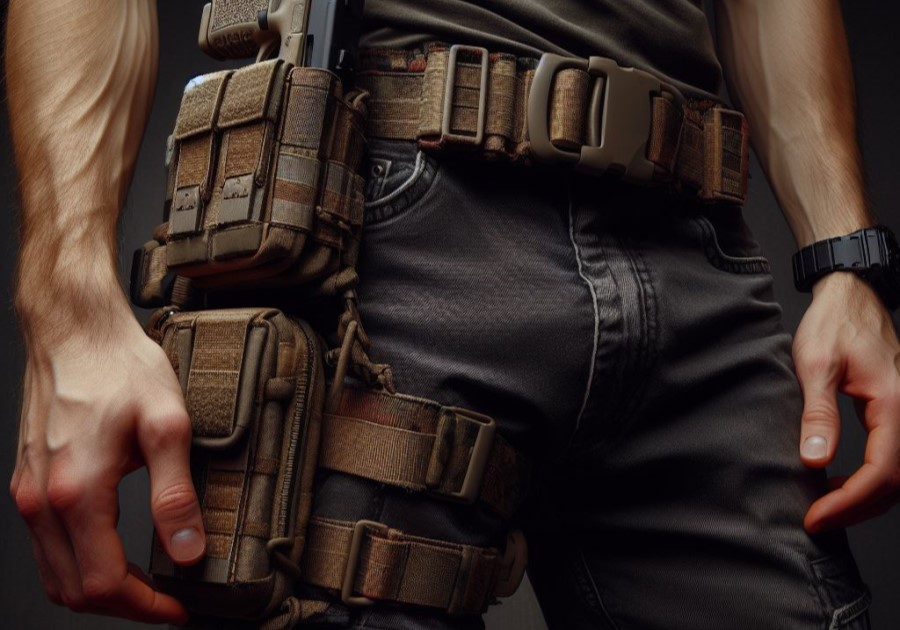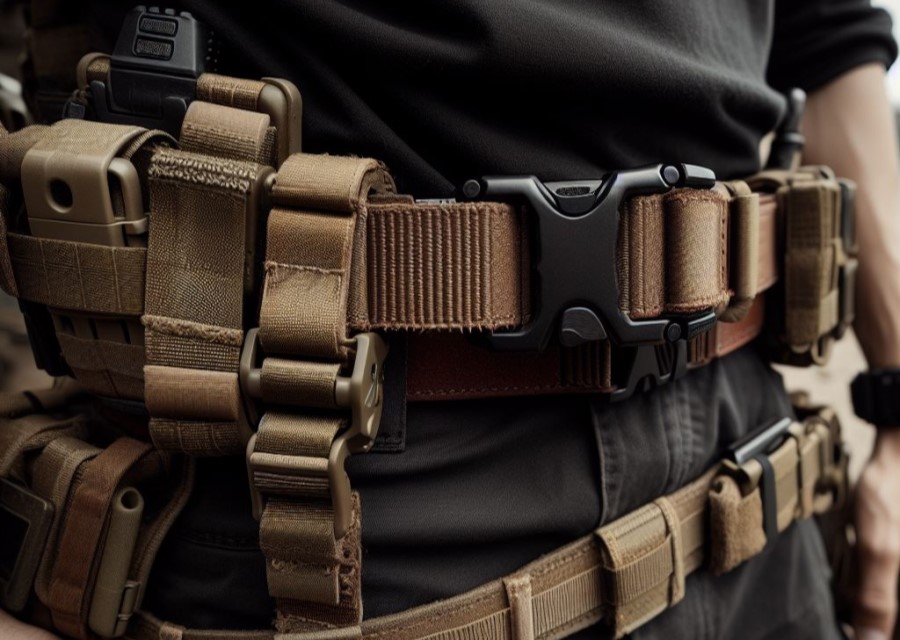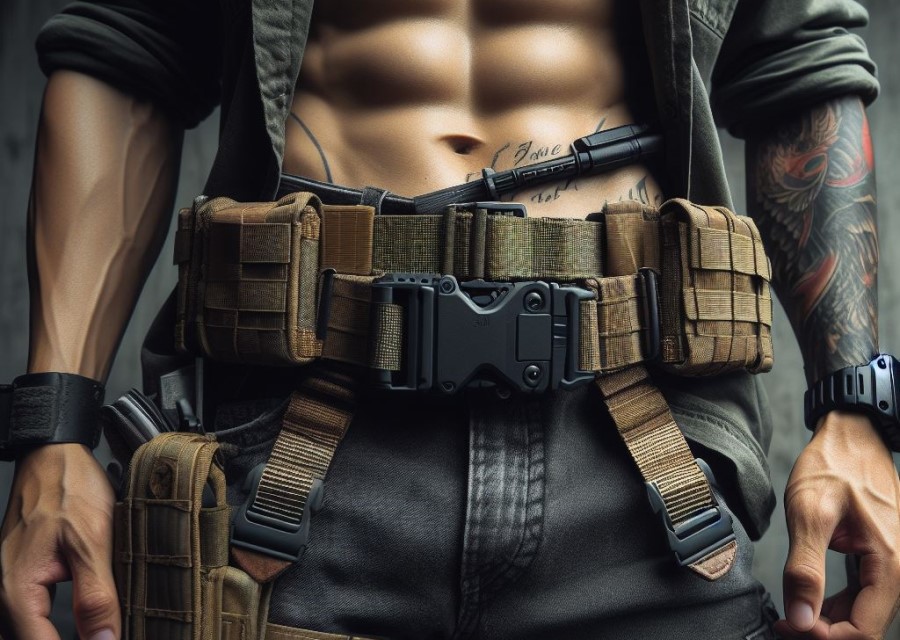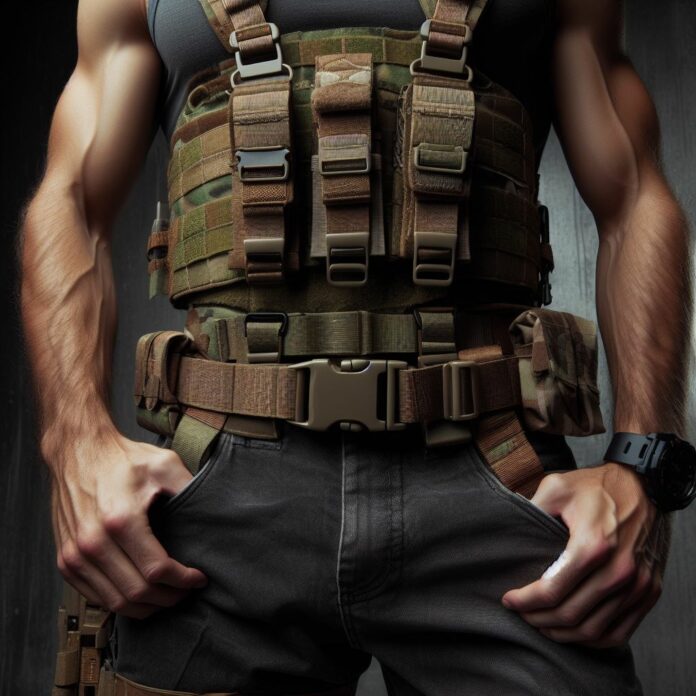Adjusting a tactical belt is essential to ensure comfort, functionality, and proper fit. Tactical belts are designed to provide support, carry equipment, and enhance mobility for individuals in various professions, such as law enforcement, military, or outdoor enthusiasts.
To optimize the performance and functionality of a tactical belt, it is crucial to adjust it correctly. This article provides a comprehensive guide on how to adjust a tactical belt for optimal fit and functionality.
Understanding the importance of adjusting a tactical belt is crucial. Ill-fitting belts can lead to discomfort, hinder mobility, and even compromise the effectiveness of carrying equipment. Therefore, knowing the proper steps to adjust a tactical belt is essential.
In this article, we will provide a step-by-step guide on how to adjust a tactical belt, including determining the fit, loosening the belt, adjusting the buckle, and tightening it properly. we will discuss common mistakes to avoid during the adjustment process and provide additional tips for proper use and maintenance of tactical belts.
By following these guidelines, readers will be equipped with the knowledge and techniques needed to ensure their tactical belt is securely and comfortably adjusted, allowing them to carry out their tasks with ease and efficiency.
Why Do You Need to Adjust a Tactical Belt?

When wearing a tactical belt, it is crucial to adjust it properly to ensure comfort, functionality, and safety. The need to adjust a tactical belt arises for various reasons. Firstly, it allows for a customized fit, ensuring that the belt is neither too loose nor too tight, maximizing comfort during wear.
Additionally, adjusting the belt guarantees that it is properly secured, preventing it from slipping or falling off during critical tasks.Moreover, adjusting a tactical belt plays a vital role in maintaining functionality.
By securing the belt at the correct tension, it ensures that attached accessories, such as holsters, magazine pouches, or utility pouches, are appropriately positioned for quick access. This significantly enhances efficiency and speed when deploying equipment or tools.Lastly, adjusting the belt is essential for safety purposes.
It guarantees that the belt is positioned correctly on the waist, distributing the weight of the gear evenly. This effectively reduces the risk of back strain or discomfort, especially during extended periods of wear or high-intensity activities.
Step-by-Step Guide on How to Adjust a Tactical Belt
In this step-by-step guide, we’ll walk you through the process of adjusting a tactical belt.From determining the proper fit to loosening, adjusting the buckle, and tightening the belt, we’ve got you covered.Get ready to learn the tricks and techniques for achieving the perfect fit with your tactical belt – no more discomfort or sagging.
So, let’s dive in and equip ourselves with the knowledge to keep our gear securely in place and ready for action!
Determine the Proper Fit
When adjusting a tactical belt, it is crucial to determine the proper fit to ensure comfort and functionality.
Ensuring the proper fit of your tactical belt is crucial for a comfortable and secure experience. Remember to determine the appropriate fit, consider the placement of your holster and accessories, and account for the material’s stretch.
With a well-fitted belt, you can confidently carry your gear and maintain optimal mobility.
Fact: Studies have shown that a well-fitted tactical belt can significantly enhance an outdoor adventurer’s preparedness and performance.
Loosen the Belt
To properly loosen the belt, follow these steps:
- Locate the adjustment mechanism on the belt buckle.
- Use your fingers or a small tool to release the mechanism.
- Slide the belt through the buckle, gradually loosening it.
- Adjust the belt to the desired level of comfort and looseness.
- Double-check to ensure that the belt is securely fastened after making adjustments.
It’s crucial to loosen the belt properly to ensure a comfortable fit. Avoid over-tightening or loosening it too much, as it may affect the functionality of the belt. Finding the right balance will allow for easy adjustment when needed.
Remember, a properly adjusted tactical belt is crucial for outdoor adventurers, gun holster and flashlight pouch users, content producers, and EDC enthusiasts. It provides the necessary support and accessibility for carrying essential tools and equipment.
Keep in mind that individual preferences may vary, so it’s important to find what works best for you. Experiment with different levels of looseness until you find the perfect fit. This will ensure both comfort and functionality during your outdoor activities or daily use.
By following these steps to loosen your tactical belt, you can enjoy a secure yet comfortable fit that allows for easy access to your gear and optimal mobility.
Adjust the Buckle

To properly adjust the buckle on a tactical belt, follow these steps:
- First, locate the buckle on the belt.
- Next, press the release button or lift the latch to unlock the buckle.
- Then, slide the buckle along the belt strap to your desired position.
- Finally, ensure that the belt is adjusted to fit comfortably around your waist or hips.
By adjusting the buckle, you can customize the fit of the tactical belt to your body shape and size. This is important for both functionality and comfort when using the belt for outdoor activities or carrying equipment such as a gun holster or flashlight pouch.
Interesting fact: Synthetic leather is often used for tactical belt buckles because it is durable and resistant to wear and tear.
Tighten the Belt
To tighten the belt on a tactical belt, follow these steps:
- Grip the end of the belt with one hand.
- Use your other hand to pull the loose end of the belt through the buckle.
- Pull the loose end of the belt until it reaches the desired tightness.
- Ensure the belt is evenly tightened along its length.
- Check that the belt is securely fastened and will not loosen during use.
- Test the tightness of the belt by moving around and performing various activities.
Tightening the belt is important for maintaining proper fit and functionality during outdoor adventures, carrying a gun holster, or attaching a flashlight pouch. For content producers and EDC enthusiasts, a well-adjusted belt ensures comfort and convenience while carrying essential tools. Tactical belts made of synthetic leather offer durability and reliability, making them a popular choice among users.
Remember, it is crucial to tighten the belt securely to prevent any slippage or discomfort that may affect your mobility. By following these steps, you can ensure a snug and reliable fit for your tactical belt.
Check for Comfort and Mobility
When adjusting a tactical belt, it’s important to check for comfort and mobility to ensure it fits properly and allows you to move freely. Here are the steps:
- Start by loosening the belt to its maximum size.
- Put on the belt and ensure it sits at your desired position on your waist.
- Tighten the belt gradually, checking for any discomfort or restriction of movement.
- Move around and perform different actions to test the belt’s flexibility and comfort.
- Adjust the belt further if needed, ensuring it stays secure but doesn’t dig into your waist or restrict your movements.
Remember, the goal is to have a belt that provides support without sacrificing comfort or mobility. To achieve this, make sure to check for comfort and mobility during the adjustment process. Consider these suggestions:
- Choose a belt with adjustable straps or buckles for a customized fit and to ensure comfort and mobility.
- Look for belts made from durable materials that won’t chafe or irritate your skin, thus ensuring comfort and mobility.
- Consider adding padding or cushions to the belt for added comfort and improved mobility.
- Ensure the belt doesn’t interfere with any equipment or accessories you need to carry, which could impact your comfort and mobility.
- Regularly check the fit of your belt and readjust as necessary to maintain comfort and mobility.
Common Mistakes to Avoid When Adjusting a Tactical Belt

When adjusting a tactical belt, it is important to avoid these common mistakes to ensure its functionality and effectiveness. Here are some key steps to follow:
- Measure accurately: Ensure you have the correct measurement of your waist before adjusting the belt to avoid making it too tight or loose.
- Avoid overtightening: It is crucial to find the right balance between a secure fit and comfort. Overtightening the belt can restrict movement and cause discomfort.
- Proper alignment: Make sure the belt is centered on your waist and aligned correctly with your gear and accessories.
- Avoid excessive layers: Steer clear of adjusting the belt over thick layers of clothing or gear as this can impact the fit and stability of the belt.
- Regular adjustments: As your body changes or you add or remove gear, regularly adjust the belt to ensure a proper fit.
- Test and readjust: After making the necessary adjustments to the belt, test it by moving and performing various activities to ensure it remains in place and provides the desired support.
- Review and learn: Take note of any discomfort or movement issues you experience while using the belt and make necessary adjustments for future use.
By avoiding these common mistakes when adjusting a tactical belt, you can guarantee that it will provide the necessary support and functionality for your needs.
Additional Tips for Proper Use and Maintenance of Tactical Belts
When it comes to the proper use and maintenance of tactical belts, there are a few additional tips for proper use and maintenance of tactical belts to keep in mind:
- Regular Cleaning: It’s important to regularly clean your tactical belt to remove dirt and grime. Use a mild soap and warm water to gently scrub the belt.
- Inspect for Damage: Before each use, inspect your tactical belt for any signs of wear or damage. Look for frayed edges, loose stitching, or broken buckles. Replace any damaged parts immediately.
- Proper Storage: When not in use, store your tactical belt in a cool, dry place away from direct sunlight. This will help prevent fading, cracking, and other forms of damage.
- Adjustment: Ensure your tactical belt is properly adjusted to fit your waist size. A loose or tight belt can hinder your performance and comfort.
- Maintaining Buckles: Regularly check the buckles on your tactical belt for any signs of rust or corrosion. Use a rust remover or lubricant to keep them functioning properly.
- Test Load Bearing: Occasionally, test the load-bearing capacity of your tactical belt to ensure it can handle the weight you need to carry. Overloading the belt can lead to discomfort and potential failure.
- Regular Inspections: Conduct regular inspections of your tactical belt to ensure all components are secure and functioning correctly. This will help prevent any unexpected failures during use.
By following these additional tips for proper use and maintenance of tactical belts, you can ensure their longevity and optimal performance.
Frequently Asked Questions
1. How do I adjust a tactical belt?
To adjust a tactical belt, first, make sure you have a reliable belt that suits your needs. Some popular options include the Jukmo belt, Qingyun tactical belt, and 5.11 tactical belt. Once you have the belt, follow these steps:
- For a hook and loop buckle belt: Set the belt around your waist or through the belt loops on your pants. Thread the end tip through the hole closer to the middle of your body. Pull the end tip through the other hole on the buckle and tighten the belt to your liking. Secure the excess belt through the keeper loop or velcro strap.
- For a frame buckle belt: Set the belt around your waist or through your pants. Thread the end tip upward through the bottom of the buckle. Pull the end tip to tighten. Secure the belt by threading the prong through the hole on the appropriate end tip. Finally, secure the excess belt through the keeper loop or belt loops.
- For a snap buckle belt: Simply slot the “male” part into the “female” part of the buckle until you hear an audible click. To unfasten, press the tabs on the buckle and push out the “male” part. Remember to choose a tactical belt that meets your specific requirements and preferences.
2. Can I wear a tactical belt without belt loops?
Yes, you can wear a tactical belt without belt loops. However, this depends on the type of buckle design. Some buckle designs, such as snap buckles, are commonly found on police duty belts, harnesses, and bags. These buckles do not require belt loops for attachment. However, other buckle types, such as frame buckles and hook and loop buckles, are typically designed to be used with belt loops. It’s important to choose a belt and buckle that suits your intended use and method of attachment.
3. Will a tactical belt hold backup ammunition securely?
Yes, a tactical belt is designed to securely hold backup ammunition and other gear. Tactical belts, like the Klik Belt, are known for their reliable gear-carrying functionality. They are commonly used by law enforcement officers and military personnel to carry numerous gears such as radios, guns, ammunition, and handcuffs. They are built with upgraded functionality and design innovations to ensure that your gear stays secure and accessible when you need it most.
4. How does a tactical belt benefit an outdoorsy person?
A tactical belt provides several benefits to an outdoorsy person. It allows them to conveniently carry essential gear, such as radios, handheld tools, flashlights, and more. The reliable and sturdy construction of tactical belts ensures that the gear stays secure during outdoor activities. Additionally, tactical belts are available in various materials, such as nylon or sturdy leather, which are well-suited for rugged environments. These belts are designed to withstand tough conditions, making them a reliable choice for outdoor enthusiasts.
5. Can uniformed officers wear a tactical belt?
Absolutely, tactical belts are commonly worn by uniformed officers in occupations involving gun handling and law enforcement. These belts provide a practical and secure way to carry the necessary gear and accessories required for their duties. Tactical belts are designed to meet the specific needs of uniformed officers, offering upgraded functionality and reliable gear-carrying capabilities.
6. What are some reliable sources to purchase a tactical belt?
When looking to purchase a tactical belt, it is important to choose a reliable source. Some trustworthy options include authorized dealers, official brand websites, and well-established online marketplaces like Amazon or reputable tactical gear stores. These sources ensure that you are purchasing genuine tactical belts, offering a wide range of choices and styles to suit your preferences. Always verify the authenticity of the product and read customer reviews before making a purchase.

